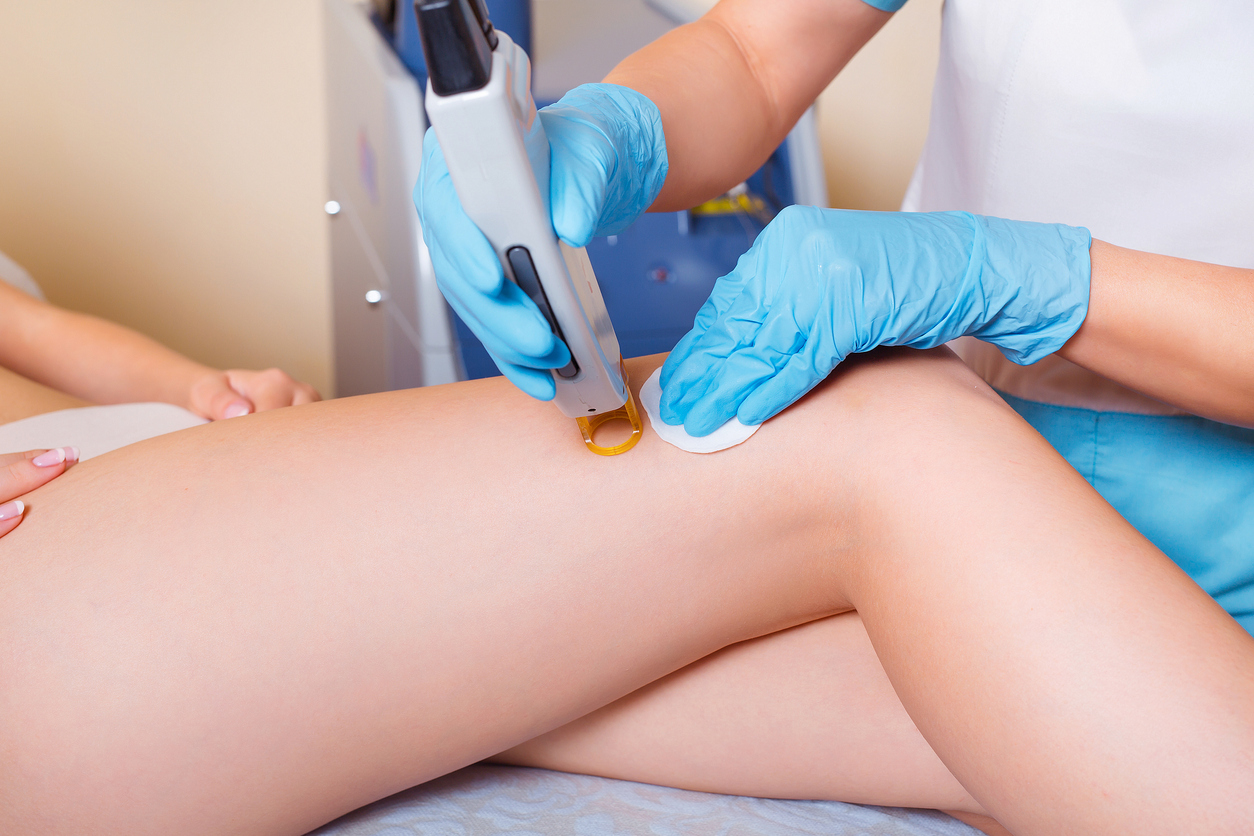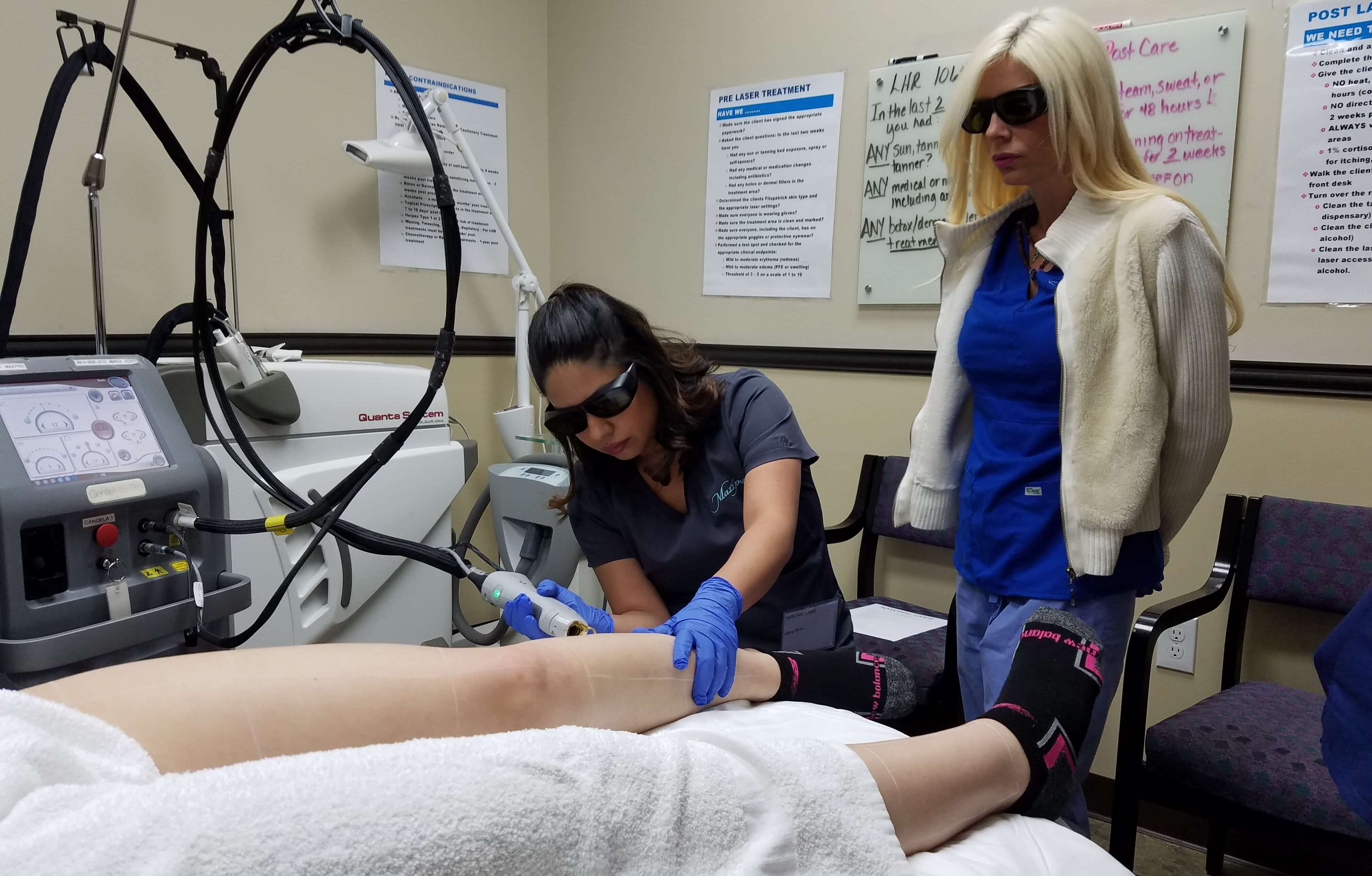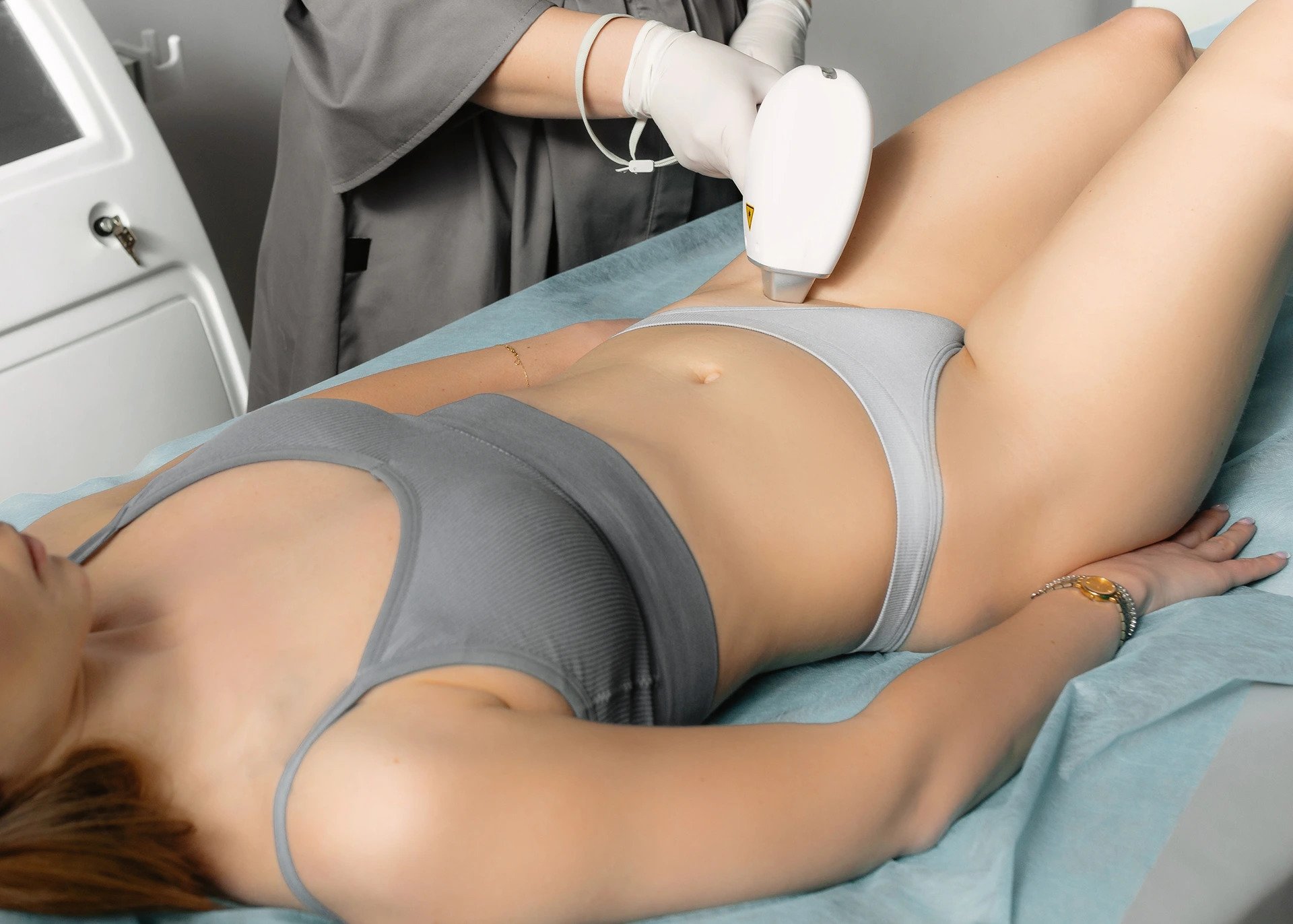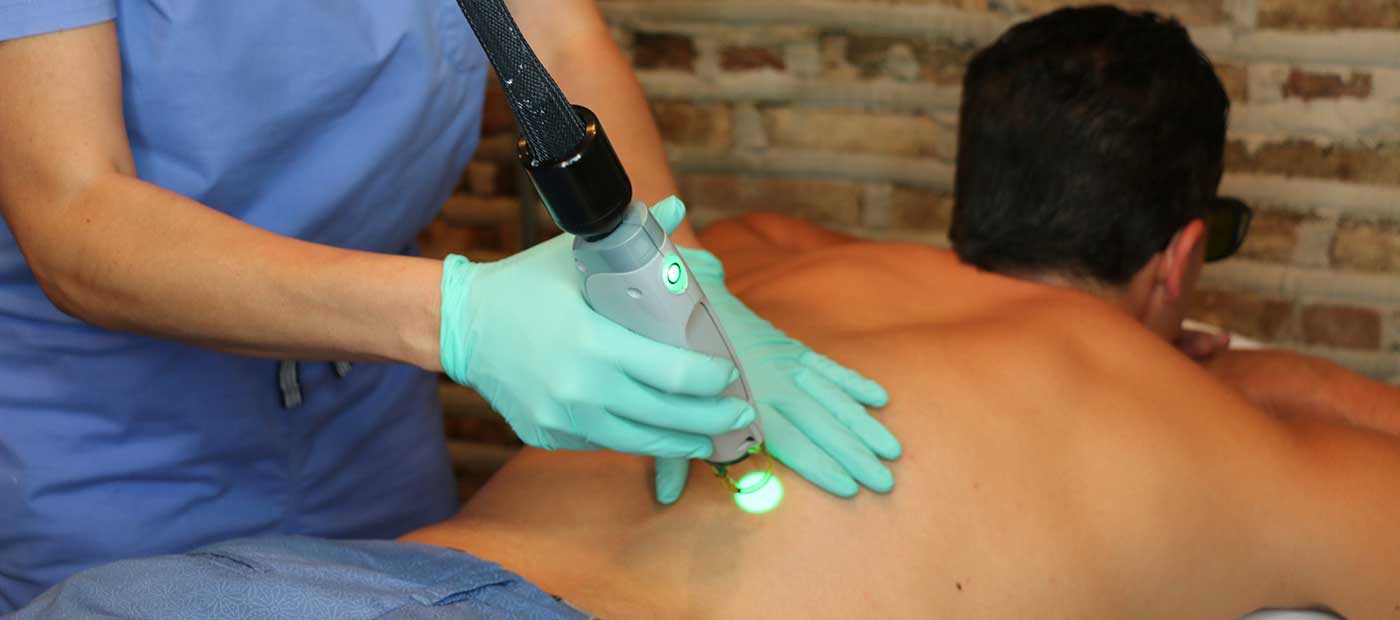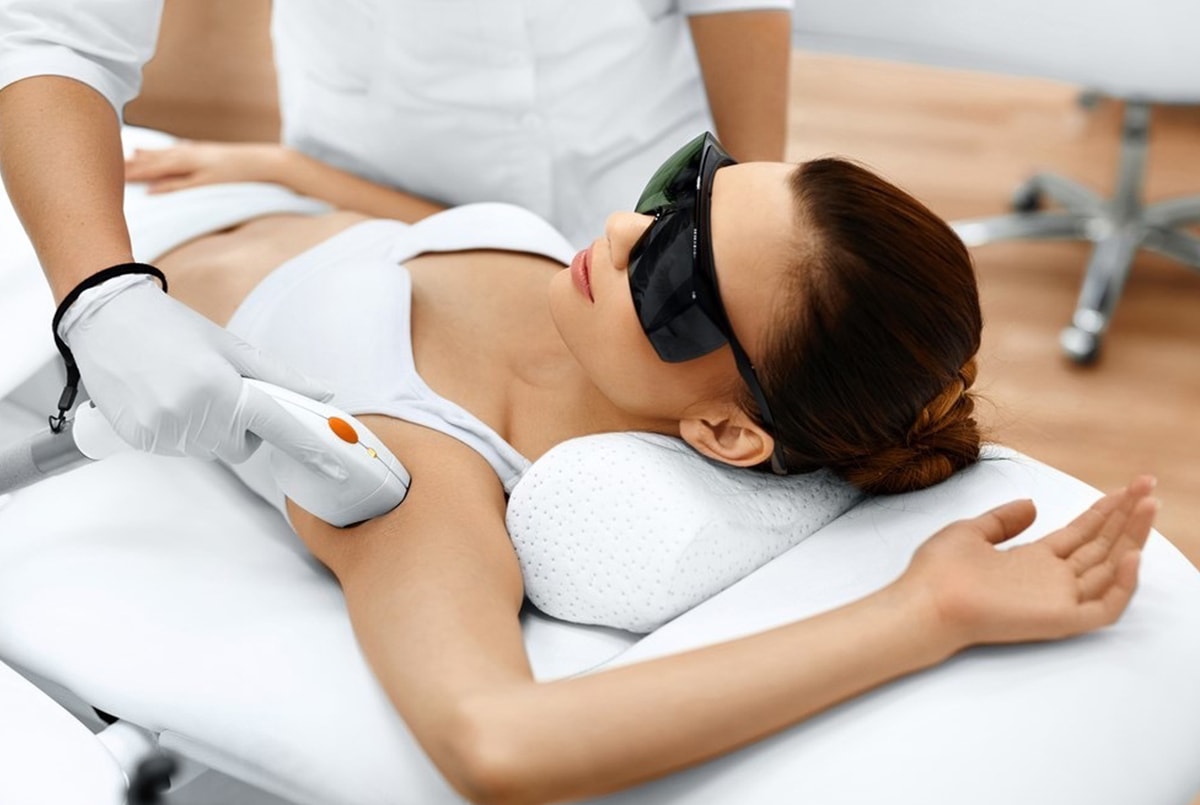Home>How-to Guides>For Women>How To Treat Laser Hair Removal Burns
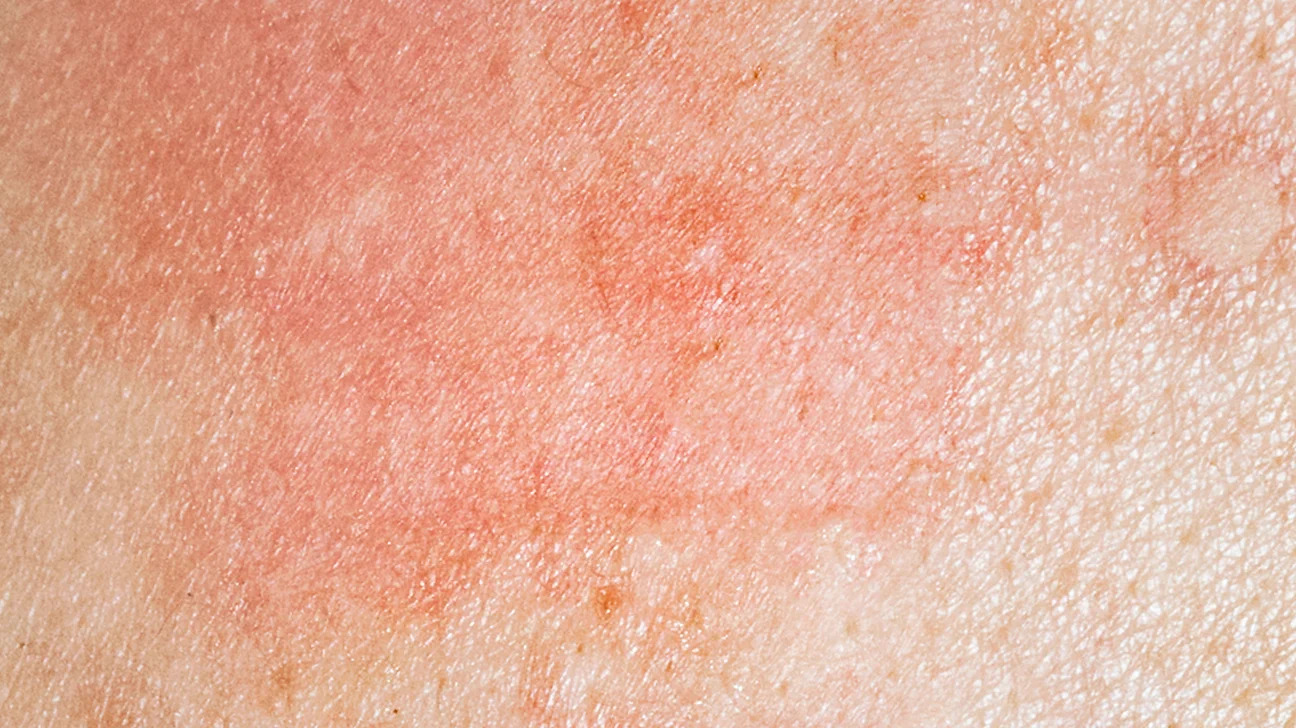

For Women
How To Treat Laser Hair Removal Burns
Modified: August 5, 2023
Learn how to effectively treat laser hair removal burns that may occur during the process. This guide is specifically designed for women seeking safe and successful treatments.
(Many of the links in this article redirect to a specific reviewed product. Your purchase of these products through affiliate links helps to generate commission for Under-tec.com, at no extra cost. Learn more)
Table of Contents
Introduction
Laser hair removal has become an increasingly popular method for achieving smooth, hair-free skin. It offers a long-lasting solution to unwanted hair growth and is considered a safe and effective treatment. However, like any medical procedure, there is a potential risk of experiencing side effects, including laser hair removal burns. These burns can range from mild to severe, causing discomfort and potentially leaving behind scars.
Understanding how to prevent and treat laser hair removal burns is essential for anyone considering or undergoing this procedure. By taking certain precautions and knowing what steps to take if burns occur, individuals can minimize their risk and ensure a successful and safe treatment.
In this article, we will delve into the topic of laser hair removal burns. We will explore the causes of these burns, discuss preventive measures, and provide guidance on treating mild burns at home. We will also emphasize the importance of seeking professional help for severe burns to ensure proper care and healing.
Understanding Laser Hair Removal Burns
Laser hair removal burns typically occur when the laser energy used during the treatment is absorbed by the skin, leading to thermal damage. Several factors contribute to the risk of burns, including the settings used during the procedure, the sensitivity of the individual’s skin, and the skill and experience of the technician performing the treatment.
Mild laser hair removal burns often manifest as redness, swelling, and mild discomfort in the treated area. In some cases, blisters may also form. These burns are usually superficial and can be managed effectively at home with proper care and treatment.
On the other hand, severe laser hair removal burns are less common but can occur if the laser is used at high energy levels or if the skin is particularly sensitive. These burns may result in intense pain, blistering, and even permanent scarring. It is crucial to seek professional medical help for severe burns to ensure appropriate treatment and minimize the risk of complications.
It is important to note that laser hair removal burns can occur on any part of the body being treated, including sensitive areas such as the face, bikini line, and underarms. Therefore, it is essential to choose a reputable and experienced practitioner who follows proper safety protocols and conducts a thorough consultation before starting the treatment.
By understanding the causes and risks associated with laser hair removal burns, individuals can take proactive steps to prevent them and ensure a comfortable and safe treatment experience. In the next section, we will explore some preventive measures that can help minimize the risk of burns during laser hair removal.
Prevention Tips for Laser Hair Removal Burns
While laser hair removal burns can occur, there are several preventive measures that individuals can take to minimize the risk and ensure a safe and successful treatment. By following these tips, you can reduce the chances of experiencing burns and other complications:
- Choose a reputable provider: Make sure to select a trained and licensed professional who has experience in performing laser hair removal treatments. Research the provider’s credentials and read reviews from past clients to ensure their expertise.
- Inform your technician about your medical history: It is crucial to disclose any relevant medical conditions, medications, or allergies to your technician before the treatment. Certain medications and medical conditions can increase the risk of burns or other adverse reactions.
- Avoid sun exposure: It is recommended to avoid sun exposure and tanning beds for at least four weeks before your laser hair removal session. Sunburned or tanned skin is more susceptible to burns from the laser.
- Avoid other hair removal methods: Refrain from waxing, plucking, or using depilatory creams in the treated area for at least six weeks prior to laser hair removal. These methods can interfere with the effectiveness of the treatment and increase the risk of burns.
- Stay hydrated and moisturize: Keeping your skin hydrated and moisturized can help improve its resilience and reduce the risk of burns. Drink plenty of water and apply a gentle, non-irritating moisturizer to the treated area regularly.
- Follow post-treatment care instructions: Your technician will provide specific instructions on how to care for your skin after the laser hair removal session. Follow these instructions diligently to promote proper healing and minimize the risk of burns or complications.
By following these prevention tips, you can significantly reduce the likelihood of laser hair removal burns and ensure a safer and more effective treatment. However, if mild burns do occur despite these precautions, there are steps you can take to alleviate discomfort and promote healing, which we will discuss in the next section.
Treating Mild Laser Hair Removal Burns
If you experience mild laser hair removal burns, there are steps you can take at home to soothe the affected area and promote healing. Here are some tips for treating mild burns:
- Cool the area: As soon as you notice a burn, apply a cold compress or run the affected area under cool water to help reduce inflammation and alleviate discomfort.
- Avoid irritants: Refrain from using harsh soaps, perfumes, or any other irritants on the burned skin. These can further aggravate the area and delay the healing process.
- Apply aloe vera gel: Aloe vera has soothing and healing properties. Apply a thin layer of pure aloe vera gel to the burned area several times a day to promote cooling and reduce redness.
- Keep the area clean and dry: Clean the burned area gently with mild soap and water, then pat it dry. Avoid rubbing or scrubbing the area to prevent further irritation.
- Avoid picking at blisters: If blisters form, refrain from popping or picking at them, as this can increase the risk of infection and scarring. The blisters will naturally heal and burst on their own.
- Moisturize regularly: Apply a fragrance-free, non-irritating moisturizer to the burned area to keep it hydrated and promote healing.
If the burn persists, worsens, or shows signs of infection such as increased redness, swelling, or pus, it is important to seek medical attention. Mild burns usually heal within a few days to a week, but if you have any concerns or doubts, it is best to consult a healthcare professional for proper evaluation and guidance.
Remember, treating mild laser hair removal burns at home is only recommended for burns that are not severe. For more serious burns, it is crucial to seek professional help, which we will discuss in the next section.
Seeking Professional Help for Severe Laser Hair Removal Burns
If you develop severe laser hair removal burns, it is essential to seek immediate medical assistance. Severe burns can cause intense pain, blistering, and may lead to long-term complications if not treated properly.
When you consult a healthcare professional for severe burns, they will assess the extent of the injury and provide appropriate treatment. This may include:
- Dressing and bandaging: The healthcare professional may apply specialized dressings to protect the burned skin and promote healing.
- Pain management: Severe burns can be very painful. The healthcare professional may prescribe pain medication or recommend over-the-counter pain relievers to manage discomfort.
- Preventing infection: They will ensure that the burned area is cleaned thoroughly and may prescribe or recommend antibiotics to prevent infection.
- Minimizing scarring: To minimize the risk of scarring, the healthcare professional may recommend specific ointments or creams to promote healing and reduce the appearance of scars.
- Follow-up care: They will provide instructions on how to care for the burned area at home and schedule follow-up visits to monitor the healing progress.
It is important to remember that severe burns require medical expertise and professional care. Trying to treat these burns at home can lead to further complications and delay the healing process. Do not hesitate to seek immediate help if you suspect you have a severe burn resulting from a laser hair removal procedure.
In the next section, we will explore some home remedies that can help soothe and alleviate discomfort for mild laser hair removal burns.
Home Remedies for Soothing Laser Hair Removal Burns
If you have experienced mild laser hair removal burns, there are several home remedies that can help soothe the affected area and promote healing. These remedies can provide relief from discomfort and aid in the skin’s recovery. Here are some home remedies you can try:
- Cold compress: Applying a cold compress to the burned area can help reduce inflammation and provide instant relief. You can use a clean cloth soaked in cold water or a cold gel pack.
- Hydrocortisone cream: Over-the-counter hydrocortisone cream can help reduce inflammation and itching. Apply a thin layer of cream to the burned area as directed on the packaging.
- Green tea compress: Green tea possesses anti-inflammatory properties that can help soothe burned skin. Brew a cup of green tea, let it cool down, then soak a clean cloth in the tea and apply it to the affected area.
- Plain yogurt: The probiotics in plain yogurt can help cool and soothe the burned skin. Apply a thin layer of unflavored, unsweetened yogurt to the burn and leave it on for 15-20 minutes before rinsing it off with cool water.
- Honey: Honey has natural antibacterial properties and can aid in wound healing. Apply a thin layer of honey to the burned area and cover it with a clean bandage. Leave it on for a few hours or overnight.
- Cucumber slices: Cucumber slices have a cooling effect on the skin and can provide relief. Place thin slices of cucumber on the burn and leave them on for 10-15 minutes.
While these home remedies can help alleviate discomfort and promote healing, it is important to note that they are not a substitute for professional medical advice. If your burns are severe or show signs of infection, it is crucial to seek medical assistance for proper evaluation and treatment.
Remember to always consult with your healthcare provider or dermatologist before trying any home remedies, especially if you have any allergies or underlying skin conditions.
Conclusion
Laser hair removal is a popular choice for achieving smooth, hair-free skin. While the procedure offers many benefits, it is essential to be aware of the potential risk of laser hair removal burns. These burns can range from mild to severe, causing discomfort and potentially leaving behind scars.
To minimize the risk of burns during laser hair removal, it is important to choose a reputable provider, inform them about your medical history, and avoid sun exposure and other hair removal methods prior to the treatment. Staying hydrated, moisturizing the skin, and following post-treatment care instructions can also help prevent burns.
If you experience mild burns, home remedies such as cold compresses, aloe vera gel, and gentle moisturizers can help soothe the affected area. However, if the burns are severe, it is crucial to seek immediate medical attention to prevent further complications and ensure proper treatment.
While home remedies can provide temporary relief, it is essential to consult with a healthcare professional for severe burns or any signs of infection. They can assess the extent of the injury and provide the necessary medical interventions to promote healing and prevent scarring.
Remember, laser hair removal burns are rare, and by taking proper precautions and seeking professional help when needed, you can undergo this procedure safely and enjoy the benefits of smooth, hair-free skin.

